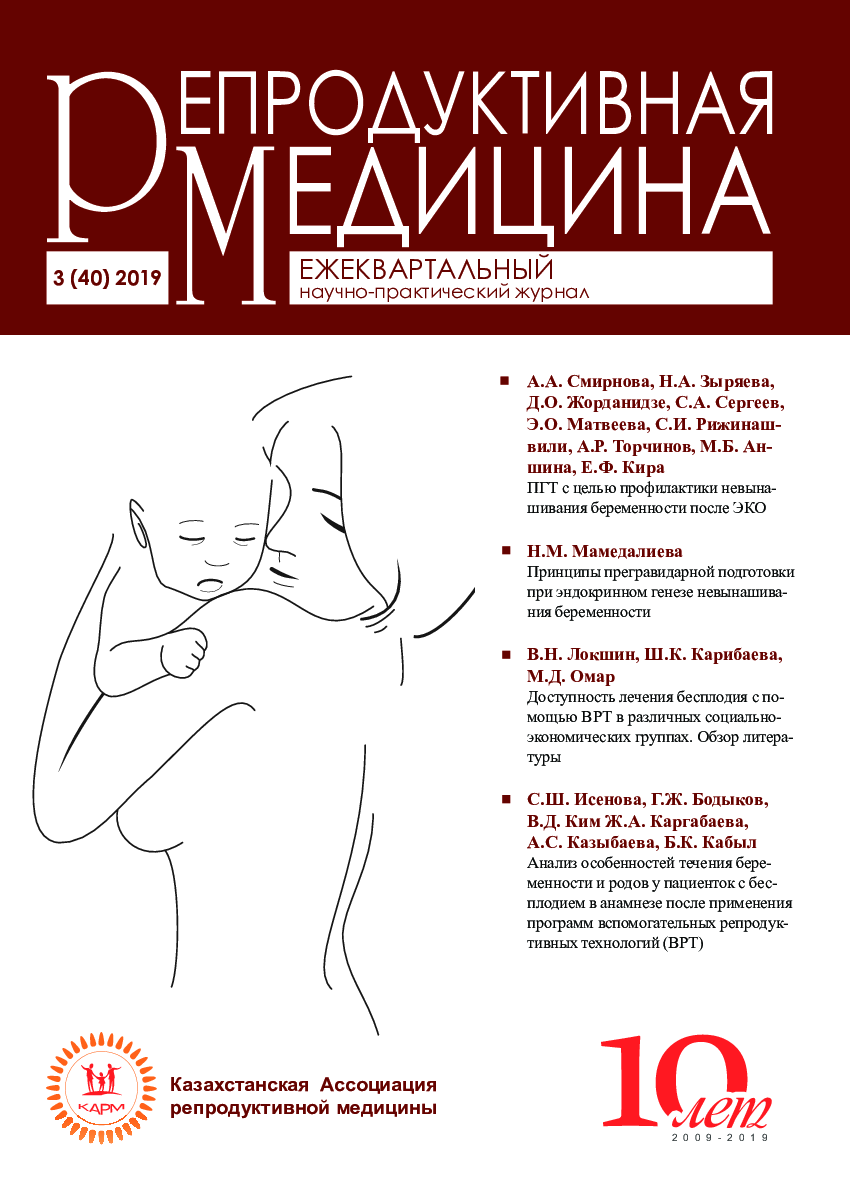Gender differences among patients come through coronary artery bypass grafting
Keywords:
gender differences, factors of atherosclerotic cardiovascular disease progression, coronary angiographyAbstract
In order to study the gender differences of the patients with a direct revascularization, clinical records of the patients who
got a hospital treatment in Cardiac Surgery Department of the Research Institute for Cardiology and Internal Diseases from
01.01.2015 till 31.12.2017 were studied. The study engaged 54 women (27.7%) and 141 men (72.3%). The average age of the
participant, regardless of sex, is 63.0 years old; among women-64; among men -62. It was concluded that diabetes mellitus
(44.4% versus 21.3%), thyroid disease (16.7% versus (1.4%) were the most significant factors of atherosclerotic cardiovascular
disease progression. Among women arterial hypertension of the 3rd degree is more common - in 92.6% of cases, among men
in 68.1% of cases. Among men, smoking has the most important impact, 53.9% compared to 3.7%, acute cerebrovascular
disease in a medical history among men is by a two-to-one margin. There are fewer overweight women than men (38.95 versus
53.6%). According to data of coronary angiography, the defeat of left coronary artery trunk is revealed among 25.9% of women
and among 29.8% of men, three-vessel disease of coronary arteries is registered among 87% of women and among 85.1% of
men, the average number of shunts for female-2.76 (±0.8) and for male-3.13 (±0.7). All of these data indicate atherosclerotic
damage to hemodynamically significant coronary arteries and almost the same number of applied shunts. The reliable gender
difference has been not identified under coronarography protocols.
References
Chazova I.E., Smetnik V.P., Balan V.E., ZaydievaYa.Z., MaychukE.Yu., Mychka V.B., Kirichenko A.A., Podzolkov V.I., Podzolkova N.M, Yureneva S.V. “Management of Women with Cardiovascular Risk In Peri-Postmenopausal: Consensus of Russian Cardiologists and Gynecologists”. Consilium Medicum. 2008; 06:5-18
The results of the activities of the health system of the Republic of Kazakhstan in 2016 and the tasks of modernization in the light of the message of the head of state, the Ministry of Health of the Republic of Kazakhstan, 03.03.2017, Astana.
Petrov E.Ye., Kazakov Yu.M., Chekalina N.I. Some features of risk factors for coronary heart disease in women. Part 2, Bulletin of problems in biology and medicine, 2014, No. 1 (106), pp. 23-30.
Shishkin A.N., Khudyakova N.V., Pchelin I.Yu., Ivanov N.V. “Pathogenetic aspects of the cardiovascular effects of estrogens”, journal: Arterial Hypertension, St. Petersburg, №: 4, 2015, p. 349-355.
Оганов Р.Г., Масленникова Г.Я. «Гендерные различия кардиоваскулярной патологии». Кардиоваскулярная терапия и профилактика, 2012; 11(4); 101-104.
Бугаенко В.В., Голикова И.П., Шеремет М.Ю. «Гендерные особенности диагностики, течения и лечения ишемической болезни сердца», Рациональная фармакотерапия №1(34) 2015, с. 5- 19.
Curr Pharm Des.2011; 17(11):1079-81. The importance of gender differences in the diagnosis and management of cardiovascular disease. Ciambrone G., Kaski J.C.
Бондарева З.Г., Федорова Е.Л., Кунгурцева О.А., Цыганкова О.В., Руяткин Д.С. Основные факторы риска и особенности клинического течения ишемической болезни сердца и инфаркта миокарда у женщин. Сердце: журнал для практикующих врачей. 2017; 16(2):110-115.
Petersen S. European Cardiovascular Disease Statistics / S. Petersen, V. Peto, M. Rayneretal. -2nd ed. - London: British Heart Foundation, 2005.
Anderson G.D. Sex and racial differences in pharmacological response. Where is the evidence? Pharmacogenetics, pharmacokinetics, and pharmacodinamics // J. Womens Health.2005, 14, 19-29.
Mosca, L. Evidence-based guidelines for cardiovascular disease prevention in women / L. Mosca, C. L. Banka, E. J. Benjamin (et al.) // J. of Amer. College Cardiology. – 2007. – Vol. 49, No 11. – P. 1230–1250.
Additional Files
Published
How to Cite
Issue
Section
License
The articles published in this Journal are licensed under the CC BY-NC-ND 4.0 (Creative Commons Attribution – Non-Commercial – No Derivatives 4.0 International) license, which provides for their non-commercial use only. Under this license, users have the right to copy and distribute the material in copyright but are not permitted to modify or use it for commercial purposes. Full details on the licensing are available at https://creativecommons.org/licenses/by-nc-nd/4.0/.




